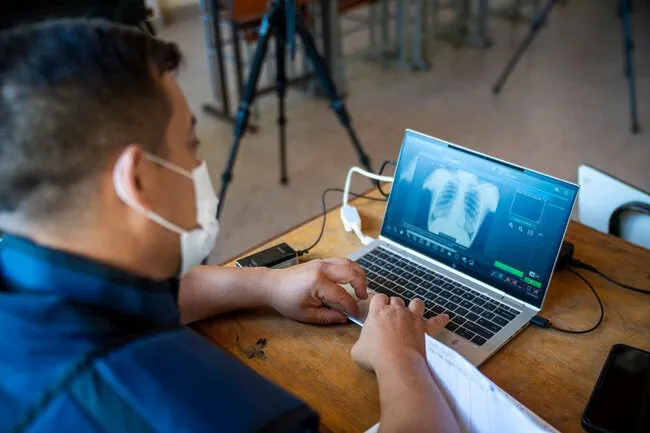
Alarming Rise: Tuberculosis Takes the Lead as World's Deadliest Infectious Disease!
2024-11-01
Author: Li
Alarming Rise: Tuberculosis Takes the Lead as World's Deadliest Infectious Disease!
In a shocking revelation, the World Health Organization (WHO) has unveiled its latest report on tuberculosis (TB), indicating a staggering increase in global cases. With approximately 8.2 million new diagnoses in 2023, TB has reclaimed its position as the leading infectious disease killer, surpassing even COVID-19. This marks a jump from the previous year’s figure of 7.5 million, the highest since WHO began monitoring TB in 1995.
While the report highlights significant strides in diagnosis and treatment methods that are contributing to a decrease in TB-related deaths, it also outlines the persistent issues, such as underfunding and uneven access to healthcare. In the Americas alone, there were around 342,000 reported TB cases in 2023, reflecting a 6.6% increase from 2022. However, there was also a positive development, with mortality rates from the disease dropping by 5.4% during the same period, thanks in part to improved treatment access—rising from 76% to 78%.
Countries like India, Indonesia, China, the Philippines, and Pakistan continue to bear the brunt of the TB crisis, together accounting for a staggering 56% of the global TB burden. Meanwhile, efforts in the Caribbean are showing promise, with some nations nearing the threshold for disease elimination.
The gender disparity in TB cases is also noteworthy, as the report indicates that 55% of TB cases were among men, while 33% were women, and 12% were children and young adolescents. WHO Director-General Dr. Tedros Adhanom Ghebreyesus expressed urgency, stating, “The fact that TB still kills and sickens so many people is an outrage, when we have the tools to prevent it, detect it, and treat it. WHO urges all countries to commit fully to end TB.”
Despite these advancements, we cannot ignore the stark reality of multidrug-resistant tuberculosis (MDR-TB), classified as a public health crisis. The treatment success rate for MDR-TB has improved to 68%, but only 44% of the estimated 400,000 cases in 2023 received appropriate diagnosis and treatment.
To combat the TB epidemic, the Pan American Health Organization (PAHO) is calling on nations to adopt innovative technologies and strategies. Among the recommendations are rapid molecular testing at primary health care levels and the use of AI-assisted radiography to identify cases in vulnerable communities. However, even with a rise in rapid testing from 40% to 48% from 2022-2023, much more work is necessary to reach the ambitious goal of 100%.
Funding remains a significant obstacle, as global investment in TB prevention and care dropped further in 2023, falling well short of the annual target of $22 billion. Low- and middle-income countries, which account for 98% of TB cases, are facing severe financial challenges, with only $5.7 billion of the required funding available. The critical role of international donors, including the United States, remains vital, yet the current financial landscape is insufficient to meet TB service needs effectively.
Research funding is also at an alarming low, with only one-fifth of the annual target reached in 2022, significantly hindering the development of new diagnostics, treatments, and vaccines for TB. The situation calls for an urgent rallying of resources and commitment to end what has been dubbed one of the most persistent killers in modern times.
As the world confronts this growing health crisis, the calls for action have never been louder. What will it take for global leaders to prioritize the battle against TB and finally leverage the tools and innovations at our disposal? The time for decisive action is now!

 Brasil (PT)
Brasil (PT)
 Canada (EN)
Canada (EN)
 Chile (ES)
Chile (ES)
 España (ES)
España (ES)
 France (FR)
France (FR)
 Hong Kong (EN)
Hong Kong (EN)
 Italia (IT)
Italia (IT)
 日本 (JA)
日本 (JA)
 Magyarország (HU)
Magyarország (HU)
 Norge (NO)
Norge (NO)
 Polska (PL)
Polska (PL)
 Schweiz (DE)
Schweiz (DE)
 Singapore (EN)
Singapore (EN)
 Sverige (SV)
Sverige (SV)
 Suomi (FI)
Suomi (FI)
 Türkiye (TR)
Türkiye (TR)